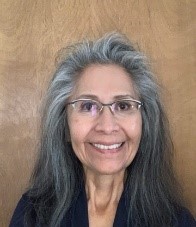Indigenous Peoples’ Day, celebrated on October 12, 2020, honors Native American histories and cultures. While sacred tobacco is important in many Native cultures for prayer, healing, and ceremony, commercial tobacco is harmful to our health. We encourage you to keep tobacco sacred and quit commercial tobacco. To promote living free of commercial tobacco, we’re launching SmokefreeTXT for American Indians and Alaska Natives, a new mobile messaging tool to help you quit.
There are so many reasons to quit smoking now, especially amid the coronavirus pandemic. Smoking increases your risk of severe illness from COVID-19 . Quitting smoking will improve heart and lung health, as well as reduce the risk of developing cancer.
Tobacco use among American Indians and Alaska Natives remains significantly higher than the national average, while tobacco use for all adults has declined . Commercial tobacco use is a contributing risk factor for heart disease, cancer, diabetes, and stroke — the leading causes of death and illness among American Indians and Alaska Natives.
The Indian Health Service, in collaboration with the National Cancer Institute, has created this tool to provide 24/7 encouragement, advice, and tips to American Indian and Alaska Native people who want to quit smoking.
Commercial tobacco is not only harmful to the person using it, but also to family members who may be exposed to secondhand and third-hand smoke. Secondhand smoke is smoke that comes off a lit cigarette, and is exhaled from the smoker’s mouth and nose. Third-hand smoke is smoke that stays in clothes, hair, walls, carpet, drapes, and furniture. Exposure to tobacco smoke during pregnancy increases the risk of low birth weight in infants. Exposure to second or third hand smoke increases the risk for Sudden Infant Death Syndrome among infants and for respiratory illnesses and asthma among children.
People who smoke but are ready to quit can enroll in the 6-8 week program by texting NATIVE to 47848. Participants will receive 3-5 text messages per day to provide support in their effort to quit. They can receive additional support by texting a keyword such as CRAVE, MOOD, or SLIP. A key feature of the SmokefreeTXT program is using the keywords to get on-demand assistance. For example, someone experiencing a craving can text CRAVE for immediate assistance to help them manage their withdrawal symptoms and avoid relapse. The SmokefreeTXT program is free, however message and data rates may apply.
You can sign up by texting the word NATIVE to 47848. Participants will take part in a short assessment survey and then start receiving messages. To unsubscribe, text the word STOP to 47848.
IHS is excited to share this new tool with tribal communities throughout Indian country. Our partners can download posters and other materials to promote this campaign at https://www.ihs.gov/hpdp/tobaccoprevention/tfcampaign/.
The IHS Health Promotion and Disease Prevention Program is using multiple strategies to address commercial tobacco use while respecting the sacred use of tobacco among American Indians and Alaska Natives. These efforts are informed by collaboration with internal and external partners.
Strategies include:
- Developing a national tobacco prevention campaign to provide the Bureau of Indian Education, tribal Head Start programs, tribal colleges/universities, tribal childcare centers, and Special Supplemental Nutrition Program for Women, Infants, and Children.
- Providing Basic Tobacco Intervention Skills for Native Communities Certification and Instructor Basic Tobacco Intervention Skills training using the University of Arizona, Health Care Partnership model that was adapted for American Indian and Alaska Native populations with an emphasis on traditional tobacco use.
- Collaborating with the National Native Network to provide quarterly webinars focusing on best practices to address commercial tobacco use. Webinars are accessible for later viewing.
- Partnering with the National Native Network and ClearWay Minnesota to update the Sacred Circle of Tobacco , a manual to engage youth and their adult mentors to increase their awareness about sacred tobacco use.
- Developing digital stories of former tobacco users of how they were successful in quitting.
Last year, the Indian Health Service updated a policy that prohibits the use of tobacco products at IHS-operated properties. The policy is designed to protect the health, safety, and comfort of IHS employees, contractors, patients, and visitors. This policy provides IHS employees with smoking cessation resources and recognizes the traditional beliefs and ceremonial practices of patients by allowing tobacco use for ceremonial purposes in a designated healing room or space.
Related content:
Blog: A Day to Encourage Commercial Tobacco Users to Quit
Tobacco Prevention
Smokefree.gov



